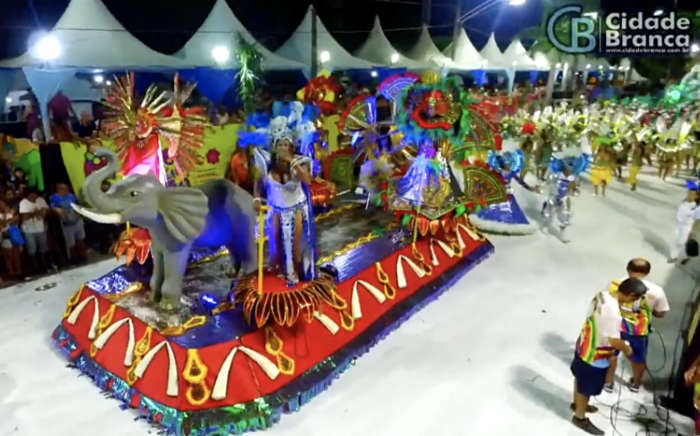Carnaval
de Corumbá
Carnaval
de Corumbá
The Pantanal town of Corumbá, in Mato Grosso do Sul, hosts the most spectacular carnaval in central-west Brazil. Although smaller than the famous carnivals in Rio and São Paulo, you'll get closer to the action, and can even take part.
Corumbá’s Carnaval dates back to the late 19th century just after the Paraguayan War, when soldiers from Rio de Janeiro were posted to guard the frontier. These, and successive military personnel stationed in the town, brought the Rio Carnaval here to Corumbá.
The Pantanal town of Corumbá, in Mato Grosso do Sul, hosts the most spectacular carnaval in central-west Brazil. Although smaller than the famous carnivals in Rio and São Paulo, you'll get closer to the action, and can even take part.
Corumbá’s Carnaval dates back to the late 19th century just after the Paraguayan War, when soldiers from Rio de Janeiro were posted to guard the frontier. These, and successive military personnel stationed in the town, brought the Rio Carnaval here to Corumbá.
Carnaval occurs before lent - a period in the religious calendar covering the six weeks before Easter. Since lent is a period for fasting and solemn reflection, Carnaval provides everyone with opportunity for a last BIG party. This occurs in late February or early March.
The event is a competition between the town's samba schools (escolas). Each group generally represents a different suburb. Their presentations are scored based on costumes, carnaval floats, music and choreography which are coordinated to represent their chosen theme. The group with the best overall score is crowned as that year’s champion.
The competition and rivalries are fierce. This means that costumes and floats remain a closely guarded secret until the big night
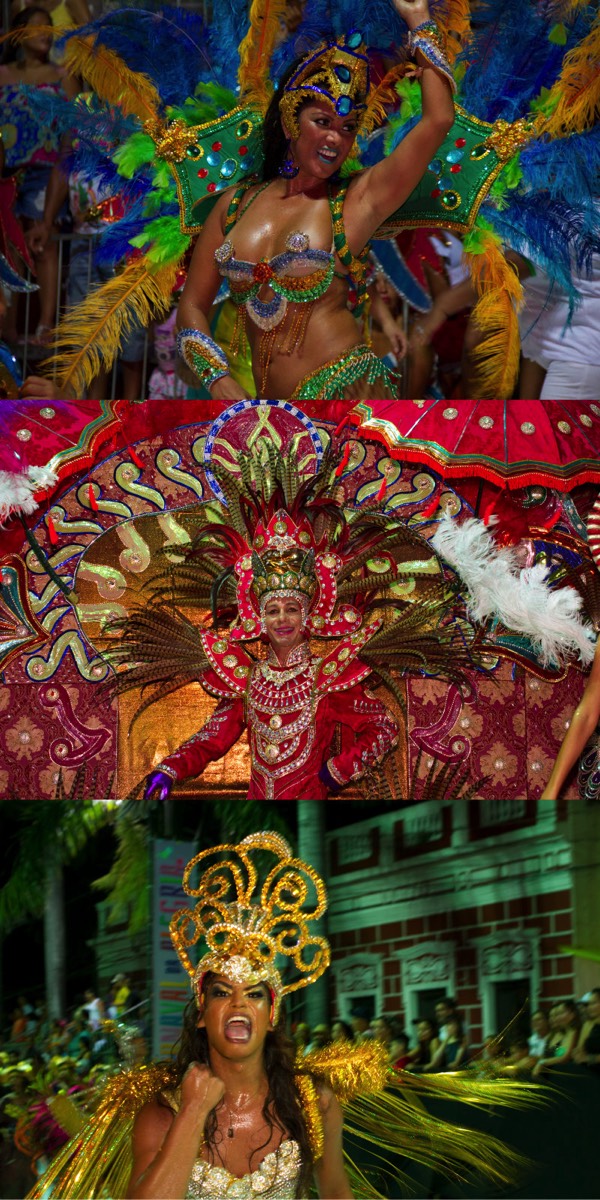
The main carnaval parades run over two nights along Avenida General Rondon overlooking Corumbá’s historic riverfront.
The first night is for “minor league” groups, whereas the second night is set aside for the more spectacular “major league”. A third night is then run for the “cultural carnaval”, which celebrates the town's history, local community groups, and children.
There’s also a week of pre-carnaval events including the the competition to select the official carnaval king (Rei Momo), his queen, and princesses - who form the royal court (corte real) which opens the parade and welcomes each samba school into the arena. Other pre-carnaval events include open-air music shows and block parties.
The main carnaval parades run over two nights along Avenida General Rondon overlooking Corumbá’s historic riverfront.
The first night is for “minor league” groups, whereas the second night is set aside for the more spectacular “major league”. A third night is then run for the “cultural carnaval”, which celebrates the town's history, local community groups, and children.
There’s also a week of pre-carnaval events including the the competition to select the official carnaval king (Rei Momo), his queen, and princesses - who form the royal court (corte real) which opens the parade and welcomes each samba school into the arena. Other pre-carnaval events include open-air music shows and block parties.
Unsung Heroes
Although the main event only lasts a few nights, and the performers gain the kudos, Carnaval would be impossible without dedicated workers and volunteers behind the scenes. They spend months ahead of time planning what will be presented, designing costumes, fundraising, making costumes, making carnaval floats, and coordinating the samba school's entry and performers.
Funding is crucial to ensure that the carnaval can take place. It’s needed well in advance to buy materials for costumes and floats, rent workshops, and pay a wage to artisans who help design and make everything used in the presentations. Some funding is available through the town council - but getting access to this is very bureaucratic, and often isn’t finalised until just a few weeks before carnaval. Even well-intentioned requirements, such as the need to provide receipts for all materials and payments (for compliance with the local government transparency laws), can create issues since many part-time local artisans simply don’t have the mechanisms or business experience to issue receipts or document their own activities and costs.
Samba schools try covering the shortfall by finding sponsors, running shows and fundraising events, and through use of volunteers. In short, carnaval is serious business which depends on dedicated organisers and volunteers within the local community.
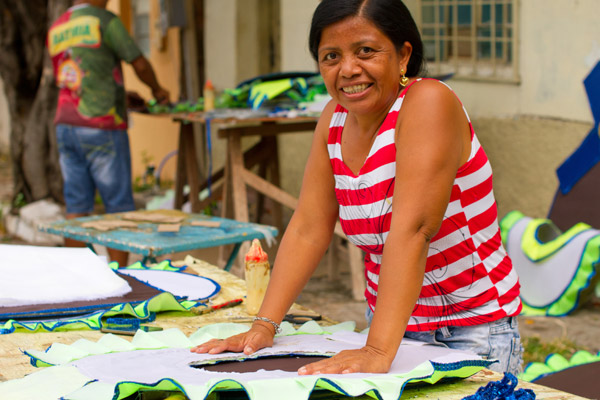
Above: Telma, working with samba school Pesada is one of a dedicated crew of organisers and workers who spend months ensuring that everything is ready on the night.
Below: Carlos Henrique is a creative director for Pesada, and is seen here making headresses for performers a few days before carnaval.
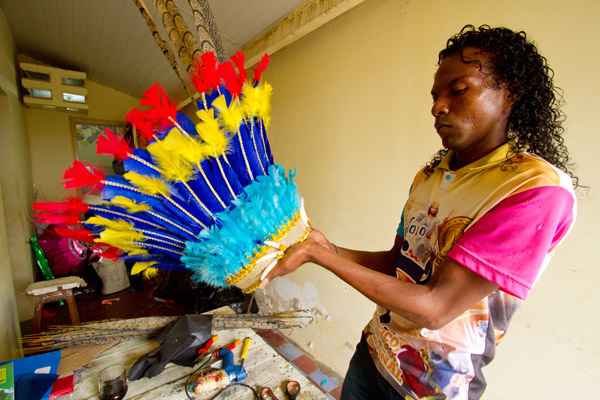
Order of Presentation
Although the carnaval may seem like a simple parade, there’s a scripted order for the samba schools to follow - with key elements which need to be included to pass the judges’ review.
Corte Real
This isn’t part of any samba school - but is an important part of the overall ritual. The sambadrome (main Carnaval performance area) is a “kingdom” ruled by it’s king, Rei Momo. He’s accompanied by a beautiful queen, princesses, and even a court jester. When each samba school enters the sambadrome, they pay their respects to the Royal Court by bowing. The Royal Court then welcome the samba school into the performance area. This tradition recalls the time when Brazil was part of the Portuguese Empire (and later Brazilian Empire) and was ruled by a King or Emperor based in Rio de Janeiro.

Comissão de Frente
Opens the presentation and sets the scene for the thematic groups that follow. For example, if school's theme is the history of Brazil, then this opening act may represent the Brazilian Indians. This opening group usually have a choreographed dance or activity.
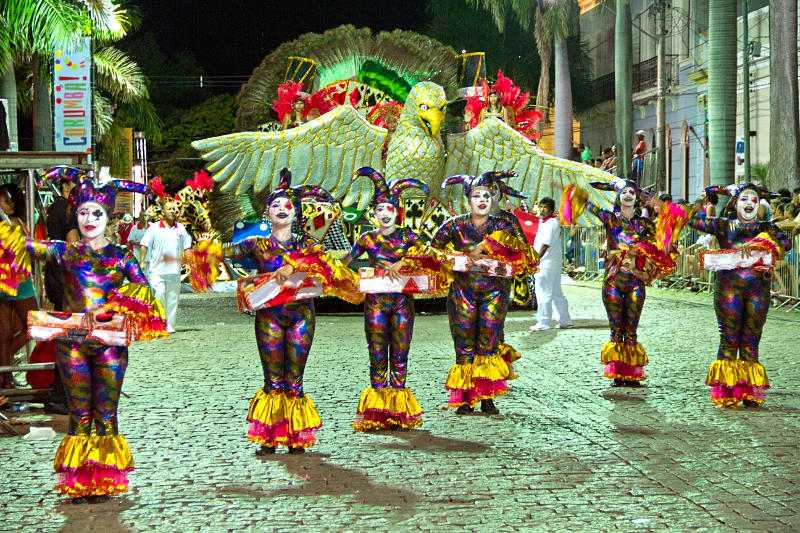
1° casal de Mestre Sala e Porta Bandbeira
An ornate but formally costumed male/female couple representing the samba school, and holding the school's official flag. Graceful, full of smiles. The couple bow/curtsey respectfully before the dignitaries, judges, and audience.
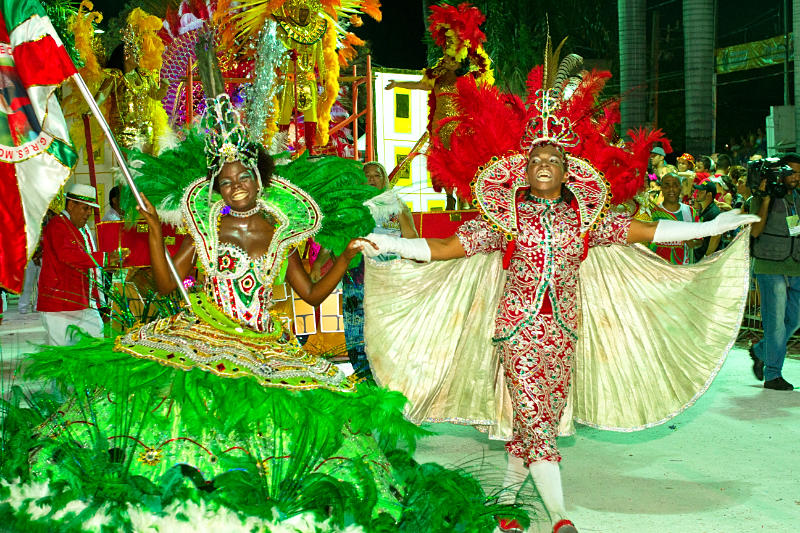
Abre Alas
This is generally a large carnaval float, with school’s name and also in keeping with the overall theme. For example, if the theme is History of Brazil, then opening wing may be a caravel - representing discovery.
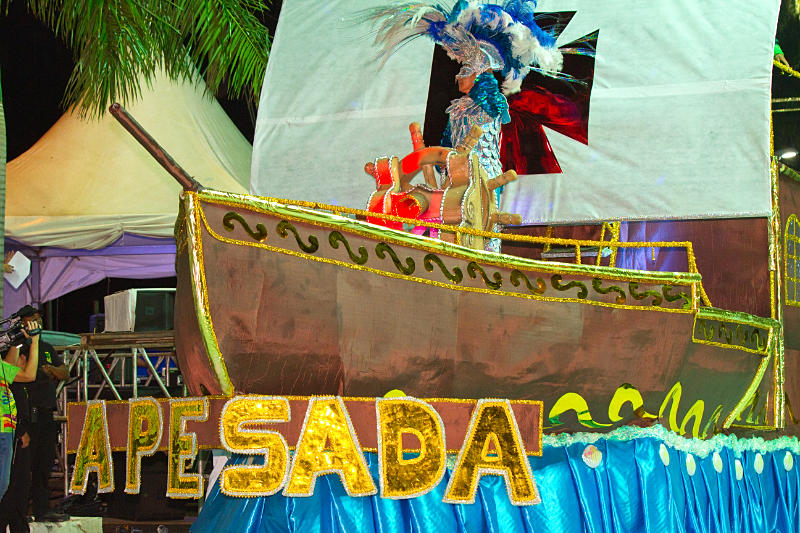
Ala das Baianas
This is often, although not always, the group that follows the opening wing. Baianas are one of the most important elements of any samba school’s presentation. This is a procession of women in large stylized hoop dresses representing the “aunts” who would oversee carnaval celebrations, and chaperone practices, in the early days when carnaval and samba were regarded as less than decent.
The term “Baiana” refers to people from the Brazilian state of Bahia - which is rich in african culture and history. It is migrants from this state who first originated samba and the Rio Carnaval tradition.
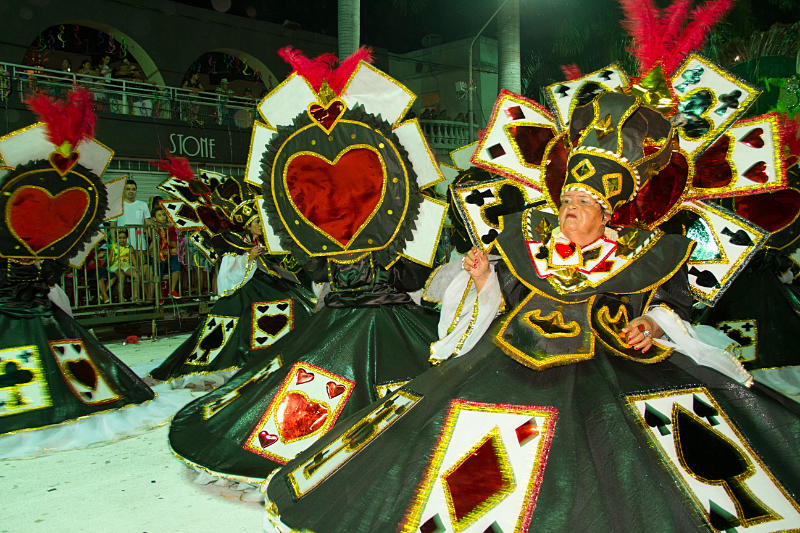
Ala das Passistas
These are the walkers dressed in costumes representing elements of the samba school’s chosen theme. These groups are usually accompanied by dancers drawn from the community which the samba school represents. These dancers are tasked to excite and seduce the audience and judges with their samba, smiles, jokes, and sometimes scanty outfits. Participating in this group is seen as a good first step towards becoming a king/queen with the drum corps (bateria).

Rainha da Bateria
In addition to the royal court (king, queen, and princesses) for the overall carnaval, each samba school has its own royal court which precedes the drummers (bateria). The key personality is the Rainha da Bateria, who dances in front of the drum corps, dressed in a glamorous fantasy costume. She is sometimes accompanied by a king, and a godmother or princesses. In the Rio Carnaval, the Rainha da Bateria is coveted position within the samba school - often going to famous actresses or models.
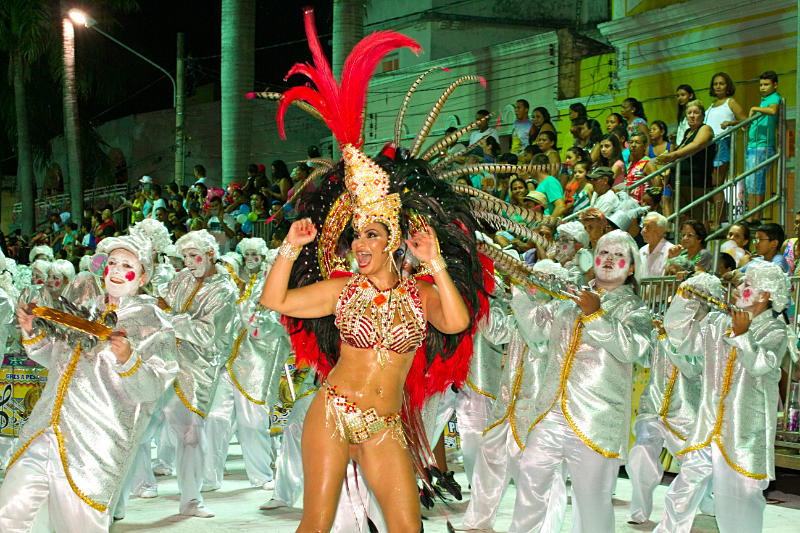
Mestre da Bateria
Like all orchestras, the drummers and percussionists of samba schools have a conductor, called the Mestre da Bateria, as well as other assistants. These walk behind the queen, and immediately ahead of the bateria.
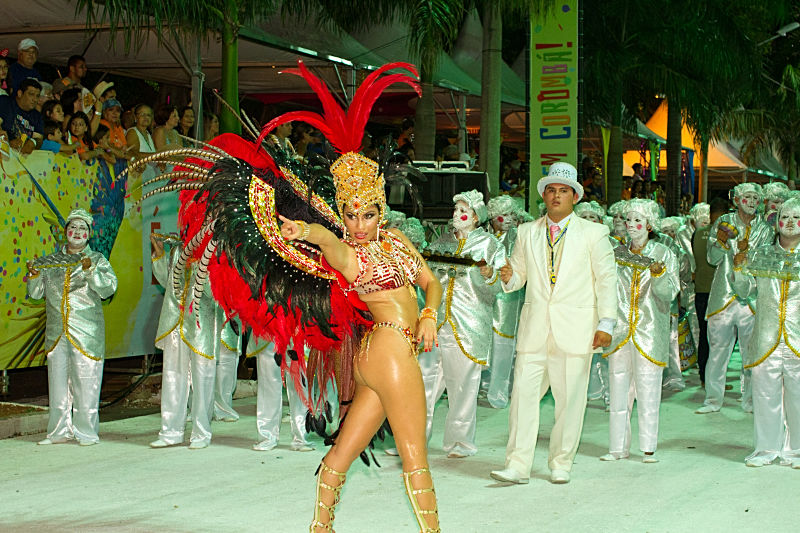
Bateria
This is the orchestra, consisting of drums and other percussion instruments, pounding out the samba and other rhythms that procession is moving and dancing to. The faster and harder the drummer plays, the faster the members usually parade. Smooth synchronization of the music and the pace of the procession is a major factor for judging.
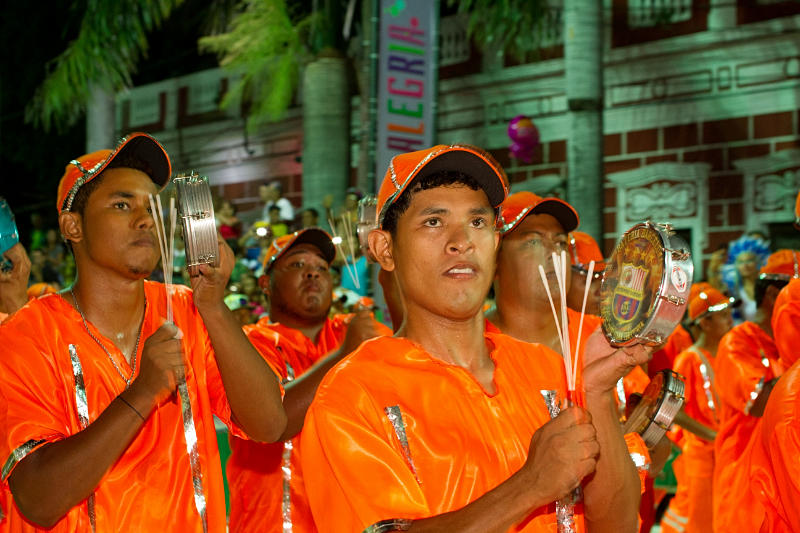
Dirigentes
This is the generally the final float in the procession, containing the president and other leaders of the samba school.
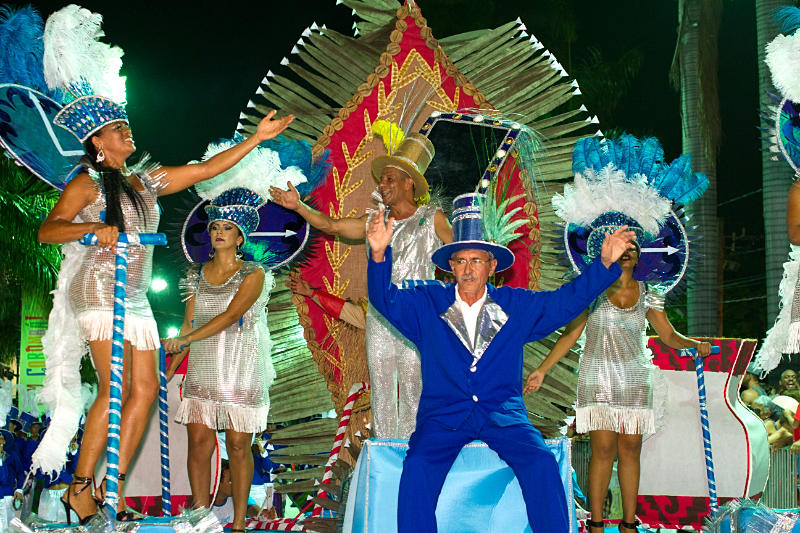
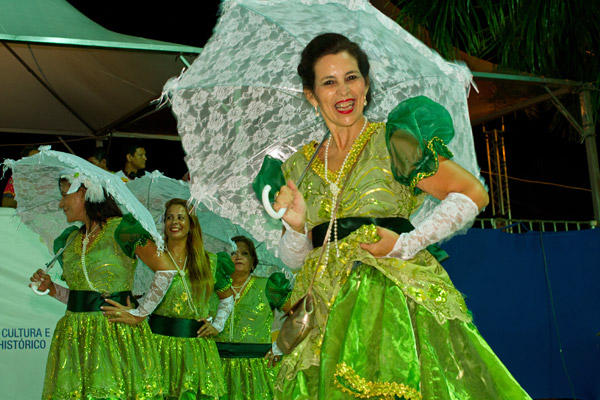
On the third night all competition gets set aside. The focus changes to a celebration of the town’s citizens, culture, and community groups. On this night you'll see involvement from local kids, cultural and educational groups. The town’s car enthusiasts also use of this opportunity to trot out their prized vintage cars, trucks, jeeps, and sports cars.
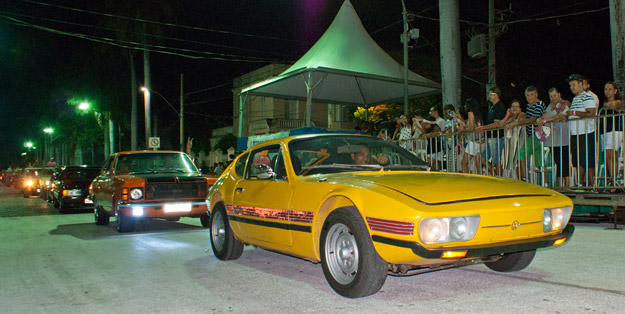

On the third night all competition gets set aside. The focus changes to a celebration of the town’s citizens, culture, and community groups. On this night you'll see involvement from local kids, cultural and educational groups. The town’s car enthusiasts also use of this opportunity to trot out their prized vintage cars, trucks, jeeps, and sports cars.

Samba Schools
Corumbá currently has ten samba schools, each nominally representing a different area – although members and fan loyalty aren’t necessarily dictated by geography.
As with football, they’re split into a major and minor league. The minor league (Group 1) parades on the first night of carnaval, with major league (Group 2) following on the second night.
Minor League (Group 1):
Major League (Group 2):
Corumbá, Mato Grosso do Sul
Brazil
Credits
Cultural Carnaval and Corumbá drone image.
